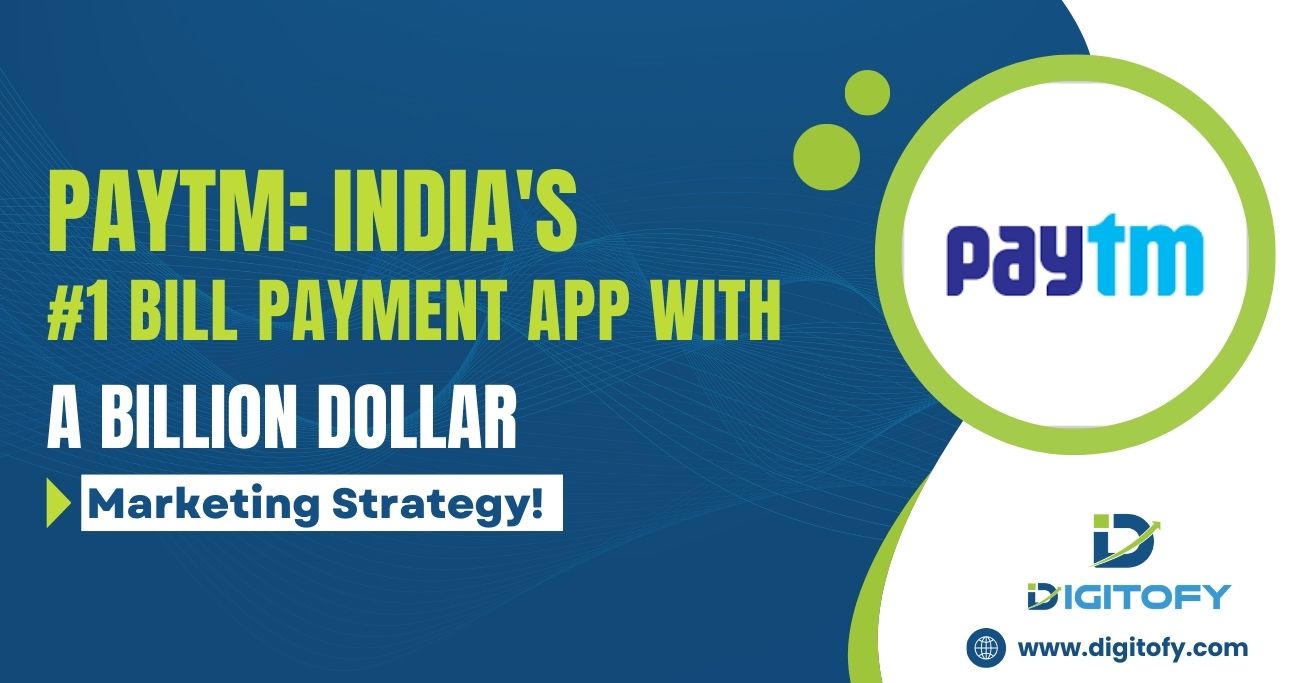Paytm’s Paisa Vasool Journey: Crafting a Winning Marketing Strategy
Paytm has emerged as one of India’s leading digital payments and financial services platforms. From humble beginnings over a decade ago, it has rapidly grown to boast over 300 million registered users. But how did a startup take on established banks and wallet apps to gain such phenomenal traction? Read on as we analyze Paytm’s clever marketing strategies that helped it capture India’s burgeoning mobile internet market with paisa vasool offerings.
About Paytm
Launched in 2010 as a mobile recharge and bill payments platform, Paytm (an acronym for “Pay through Mobile”) was founded by Vijay Shekhar Sharma in a small office with big dreams. As internet and smartphone adoption grew exponentially in India, Paytm pivoted from its origins to become a digital wallet and payments app. It later expanded into wealth management, e-commerce, and more to create an entire financial services ecosystem for the common Indian. With innovative features and targeted campaigns focused on trust and transparency, Paytm was able to onboard a massive user base across metros, towns and villages.
Also read : How Paper Boat Became a 500 Crore Brand with a Unique Marketing Strategy!
What’s New with Paytm?
In recent years, Paytm has ventured into new digital banking arenas while consolidating its leadership in payments. It launched services for instant money transfers, insurance, credit cards, postpaid payments, equity trading and more. Paytm Money gained rapid traction as an investment and wealth management platform focused on transparency and lower fees. Meanwhile, Paytm Mall continues to be a leading e-commerce portal thanks to intuitive apps and immersive shopping experiences. After successful public listings of Paytm Money and Paytm Financial Services, the brand is now focusing on profitability and monetizing its vast user base through financial services.
Understanding Paytm Users
Paytm crafted its marketing strategy based on insights into what features Indian consumers wanted most – convenience, affordability and transparency. Cost-conscious households loved getting proactive notifications about unpaid bills to avoid penalties. Small business owners embraced digital payments solutions for simplicity, transparency and faster settlements. Millennials signed up to grab deals, cashbacks and rewards while enjoying superior app experiences. By constantly tracking user feedback and behavior, Paytm refined offerings for key buyer personas across India’s socio-economic spectrum.
Crafting the Paytm Marketing Mix
Let’s analyze the four Ps that comprise Paytm’s marketing mix: Product, Price, Place and Promotion. This will reveal key aspects of its customer acquisition and retention strategies.
Also read : Kalyan Jewellers: From Small Town Shop to a Global Brand – A Marketing Success Story
Product Strategy
Paytm built products to solve pain points in payments, commerce and banking with maximum convenience. Easy mobile recharges, flexible bill payments, intuitive money transfers, convenient online shopping, and seamless investments cater to major consumer needs. Features like vernacular interfaces, intuitive workflows and proactive notifications enhanced ease-of-use and drove viral adoption.
Pricing Strategy
Paytm scored with consumers through low, transparent pricing and fees. It charges no convenience fees for most bill payments and money transfers. Bulk payment solutions for merchants also come with low charges and 100% settlement. Dynamic pricing and cashbacks during festive promotions attract bargain hunters. Offering services for free or at nominal charges removed adoption barriers across India.
Placement Strategy
With mobile emergence, Paytm went app-only unlike bank-centric payment apps. App-based sign-ups, usage flows and notifications enabled frictionless user onboarding. Partnerships with cellular carriers ensured Paytm’s pre-installation on low-cost smartphones, building reach. High app visibility on Play Store and App Store via targetted rankings and search ads were leveraged to drive downloads.
Promotions Strategy
From radio, print and TV ads during major cricket tournaments to metro station and cinema hall branding, Paytm adopted a high-decibel promotion strategy with mass reach. Referral programs incentivized sharing, creating viral loops to acquire rural users. College campus drives introduced digital payments and financial services to first-time internet users, hooking Indian youth. Call center agents and local agents patiently educated novice users to overcome tech barriers.
Analytics & Agility
By continually monitoring user analytics dashboard and app ratings, Paytm stays atop dynamic Indian consumer needs. Rapid feature rollouts respond to user feedback and emerging use cases. Paytm Moved Fast and Broke Things to build market dominance!
Sizing Up the Competition
Paytm locked horns with several rivals in India’s rapidly evolving fintech space over the years. Let’s weigh how it stacks up against major competitors currently.
- PhonePe: As a Flipkart subsidiary, PhonePe tapped into India’s online shopper base early on. But Paytm outguns it with a wider ecosystem spanning payments, banking, wealth and more.
- Google Pay: Although pre-installed on Android phones, Google Pay is still playing catch up with Paytm’s extensive suite covering payments, banking, investments and commerce.
- Amazon Pay: With Amazon’s e-commerce heft, Amazon Pay is a payments frontrunner. But Paytm has established clear category leadership as a full stack fintech player.
Also read : Dabur: 140Years of Global Success with Genuine Pricing & Social Marketing Strategy
Paytm’s Trailblazing Track Record
Paytm has built such an extensive payments ecosystem that for many Indians, it’s the default app to transact digitally thanks to ingenious marketing. How Paytm raced ahead of global tech giants and old school banks is a remarkable story of out-of-box marketing by an Indian startup.
Notification Marketing
Paytm began sending users payment due and bill reminder notifications long before rivals caught on. The timely alerts helped consumers avoid penalties for missing payments. Paytm became indispensable – the app Indian consumers trust to remind them to use it!
Viral Loops
‘Each One, Teach One’ campaigns by Paytm incentivized existing app users to teach new ones. New signups got cash bonuses which they could only withdraw after doing transactions. Such creative viral loops expanded Paytm’s small town user base rapidly at low acquisition costs.
Campus Drives
Paytm targeted India’s massive youth population in metros, small towns and rural campuses to capture first-time internet users. After Flipkart, Paytm was among the earliest unicorns to conduct campus hiring drives for talent and user acquisition.
Remote Onboarding
Paytm trained call center staff and local agents to handhold users in installing the app and complete their first transactions. Such facilitated onboarding in small towns helped overcome barriers in digital literacy and internet connectivity using human touch.
Also read : How DS Group Made History by Selling 100 Crore Pulse Candies in 8 Months
Staying True to the Vision
From the early days when it ran on a shoestring budget to now steering revenues exceeding $1 billion, Paytm never lost sight of the founder’s vision to bring digital banking to the masses. Vijay Shekhar Sharma believes that technology should be easy enough for the common Indian to access and harness. By making digital payments and financial services accessible pan-India through smart marketing, Paytm empowered millions.
Wrapping up
Paytm has emerged as the top fintech player in India, but it cannot rest on its laurels. Fintech is evolving rapidly around the world. Paytm is gearing up to face emerging startups like Slice and Jupiter while battling global tech titans looking to dominate Indian payments. But if the past decade has shown anything, Paytm still has a few smart marketing tricks up its sleeve to keep winning Indian hearts!
Related blogs :
Paytm’s Paisa Vasool Journey: Crafting a Winning Marketing Strategy
Delivering Success: The Marketing Strategies Behind Blinkit’s Rise
Cracking Open the Crunch: Kurkure’s Winning Marketing Mix
The Patanjali Phenomenon: How an Influencer Built an FMCG Empire
How Peyush Bansal’s Marketing Strategies Made Lenskart The Most Lovable Brand?

.webp)

